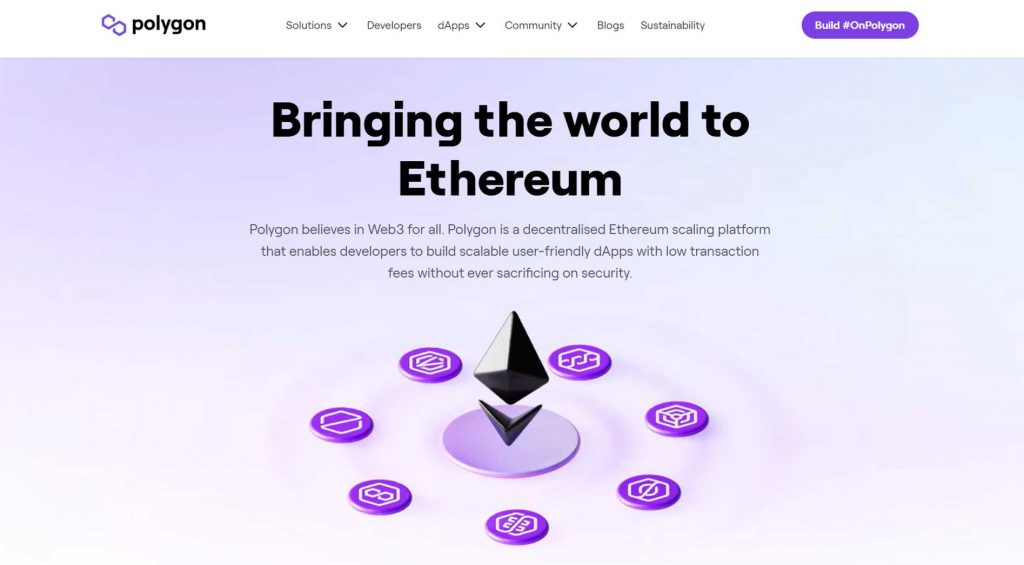What is Polygon (Matic)? How Does it Help the Crypto World?
What is Polygon (Matic)1? Like many other cryptocurrency networks, Polygon is a scaling solution that enables higher transaction rates at a low cost. Bitcoin and Ethereum are the most well-known brands in the crypto industry, but both networks are straining to meet the needs of their users since they can only handle a certain amount of transactions at once.
Ethereum places a greater strain on its network since it allows smart contracts, NFTs, and other applications that appeal to the vast majority of its users. When the network becomes congested, the transaction charge is eventually raised.

Over the last few years, many blockchain networks have been developed to compete with Ethereum while providing greater customer service. Polygon (Matic), on the other hand, is not an Ethereum competitor. It is intended to help the Ethereum network grow in size, security, and usefulness.
What is Polygon (Matic)?

Polygon is a layer-2 network that may be added to the Ethereum network without modifying the original blockchain. It is intended to link and construct Ethereum-compatible blockchain networks. Polygon is committed to providing scalable solutions to the multichain Ethereum environment. As a result, it calls itself “Ethereum’s Internet of Blockchains.”
Polygon presents a layer-2 solution framework and interoperable sidechains with Ethereum’s infrastructures. Polygon is a plasma-based aggregator that complements the base chain’s fundamental pain points while decreasing its weight. Polygon’s framework can handle decentralized apps and transmit transactions from the main blockchain to sidechains.
How Does Polygon Work?
Polygon uses a Proof-of-Stake consensus mechanism to move transactions from the main blockchain to the sidechains. The validation procedure takes place on the sidechains before the transactions are finished on the main chain. As a result, it enables faster transaction speeds while decreasing congestion and gas costs.
A polygon network comprises two types of chains: stand-alone chains and secured chains. A group of professional validators manages the secured chains, while the stand-alone chains are Ethereum-compatible, self-sovereign chains that operate independently.
Polygon Architecture
Polygon is intended to assist in the widespread adoption of the Ethereum network. It offers a software development kit (SDK) for people who wish to run decentralized applications on the Ethereum network. The developing process takes place on the side chains. And then, the apps are linked to the main blockchain.
Polygon has developed a set of scalability approaches for creating sidechains:
Optimistic rollups
This framework is similar to zk-Rollups in that it processes transactions off-chain. However, rather than submitting proof of legitimacy for each transaction, it only submits proof of fraud if a block violates the requirements of the main network.
Plasma chains
It is a platform that allows users to create decentralized apps off-chain while leveraging Ethereum’s safe infrastructure.
Stand-alone chains
Bridges can connect these chains to the main network.
Secured chains
A shared pool of PoS validators manages the validation process on these chains.
zk-Rollups
While conducting transactions off-chain, this framework provides proof of validity to the main chain.
Validum Chains
It’s a similar framework to zk-Rollups, except instead of transmitting data to the main chain, it stores it on sidechains.
Surprisingly, these scaling strategies do not affect the Ethereum network’s security or user experience. As a result, they can be an excellent alternative to delayed blockchain transactions.
What is MATIC Token Used For?
MATIC is Polygon Network’s native token. MATC has a market cap of $7.2 billion with a circulation supply of 8.7 billion coins. MATIC will have a maximum supply of 10 billion coins produced over the following few years. In terms of market capitalization, MATIC is the 11th most popular cryptocurrency. MATIC can be used for a variety of purposes on the platform.
Staking
Users can become validators by staking their MATIC tokens. To participate in this scheme, they must store at least 1,000 MATIC tokens in a certain wallet. Furthermore, they must have a fully operational node (or computer) to assist with the validation process.
Users risk losing some of their staked money if they act intentionally or make a mistake. Once the transaction is completed, the validators are rewarded with a percentage of the gas fee.
Gas fee
Users must pay a small amount of MATIC tokens when processing transactions over its network.
Delegating
Those who don’t have the necessary number of MATIC tokens to become validators can stake their tokens through a trustworthy validator. As a result, they can receive a commission in the form of MATIC tokens. They may, however, lose their staked coins if the validator makes a mistake. As a result, proper research must be done before selecting a validator.
How Does Polygon (Matic) Help The Blockchain Industry?
Polygon provides a seamless environment for blockchain networks to exchange information beyond technological barriers. Polygon has already brought the crypto community to a borderless digital universe by developing Ethereum’s Internet of Blockchains.
Developers may now establish their own Ethereum-compatible blockchain protocols with a single click. Polygon provides complete interoperability to Ethereum-based apps while maintaining the main network’s decentralization.
As a result, it enables developers to build decentralized applications on their preferred blockchain network (Ethereum) while benefiting from fast transaction speeds and minimal gas prices.
Conclusion
Polygon is a layer-2 network aimed to address Ethereum’s scalability difficulties. It has proposed numerous consensus protocols that can aid in the resolution of the Ethereum Network’s complexity. We’ve discussed the operation of Polygon (MATIC). Please contact us if you require additional information regarding Polygon’s contributions to the crypto world.




